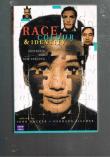'In 1988 the Australian Aboriginal author Colin Johnson changed his name, following the example of Aboriginal poet Oodgeroo (previously Kath Walker):
I was talking to Oodgeroo Noonuccal ... and she ... said seeing that we are writers why not the paperbark tree? `Oodgeroo' means paperbark in the Noonuccal language and `Mudrooroo' means paperbark in the Bibbulmum language which is my mother's people's language.'
In 1988 the taking of a 'working totem', in the sense of a writer's `trademark', was also a political gesture. It was meant, ironically, as a `bicentennial event', an act of public protest against the official celebrations of the beginning of the European invasion of Australia. Thus, Colin Johnson stressed his Aboriginality and confirmed his commitment to the Aboriginal movement by adopting an Aboriginal name. He became Mudrooroo Narogin, the family name that refers to his birthplace in Western Australia. Subsequently he adopted as his legal name Mudrooroo Nyoongah, the name of the Aboriginal people of the southwest of Western Australia, while his nom de plume was shortened to Mudrooroo, the name that now appears on the covers of his books. To complicate matters even further, already in 1964, prior to the completion of his first novel, Mudrooroo had contemplated a name change when he thought of publishing Wild Cat Falling under an assumed name. It is perhaps no surprise that an author with such a history of re-inventing himself, whose work has appeared under three different names (Colin Johnson, Mudrooroo Narogin, Mudrooroo), should be concerned with the issue of identity. But was the taking of a new name a 'reverting' to the author's 'Aboriginal name', as the bio-graphical note in the 1990 edition of Wild Cat Falling suggests? (Introduction)



